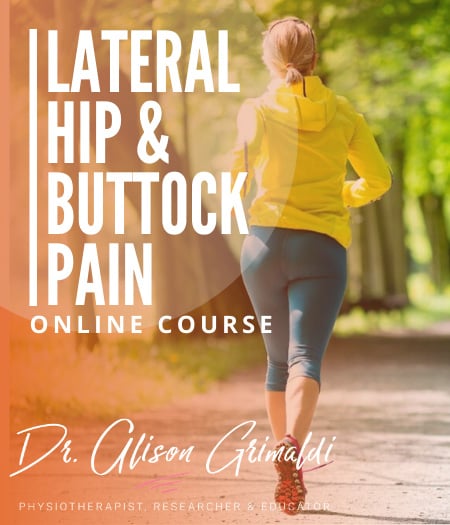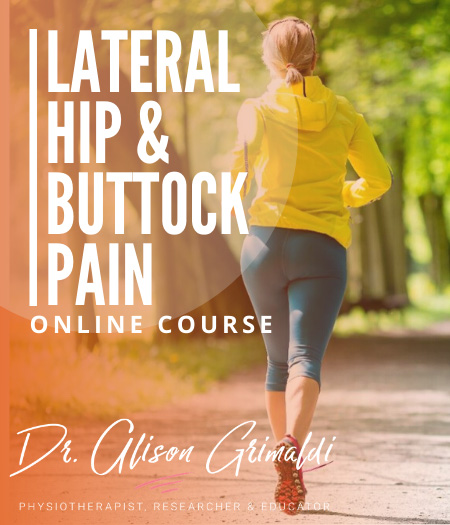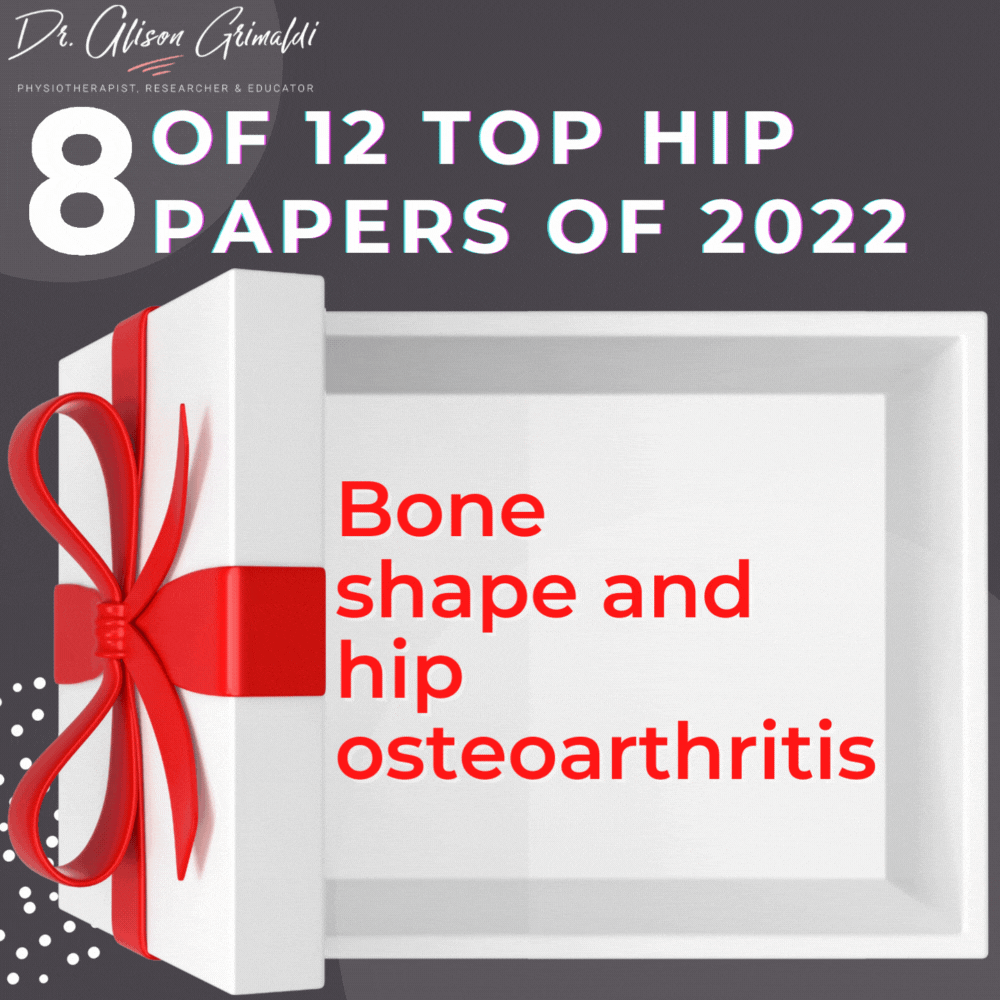7 of 12 Top Hip Papers of 2022 | Ischiofemoral impingement after hip replacement

Today is Day 7 of my 12 Top Hip Papers series of miniblogs from 2022! If you missed Day 6, you'll find a link at the bottom of this page to take you back. The top hip paper for day 7, examined the relationship between femoral torsion (version) and ischiofemoral impingement after hip replacement. Read more below to see what they did, key findings and the clinical implications.
Discover our Lateral Hip & Buttock Pain Course
If you enjoyed this blog, you might like to take the online course on Lateral Hip & Buttock Pain - 6 hours of guided online video content. Examine various joint-related, soft tissue-related and nerve-related conditions associated with lateral hip and buttock pain, their mechanisms, associated impairments, clinical diagnostic tests and management approaches. To learn more, take the lateral hip and buttock pain online course, or join me in an online or practical lateral hip and buttock pain workshop.

7 of 12 Top Hip Papers of 2022: MRI findings of ischiofemoral impingement after total hip arthroplasty are associated with increased femoral antetorsion.
The impact of femoral malversion in a native hip can be substantial (Read more here about the impact of femoral malversion), but we also need to consider changes in femoral version that may occur during total hip arthroplasty. How the femoral stem is positioned in the femoral shaft will directly impact femoral version, referred to as femoral torsion in this paper.
Femoral version can impact on the ischiofemoral space and health of the quadratus femoris muscle that sits within that space. This paper took a look at the relationship between femoral version and ischiofemoral impingement after hip replacement. one reason for postoperative lower buttock and/or groin pain.
Study Aim:
The aim of this study was to assess if increased postoperative antetorsion (femoral anteversion) is associated with MRI findings of ischiofemoral impingement.
What was done:
- Retrospective study of 221 patients after total hip arthroplasty
- Mean age was 66.0 ± 12.6 years (age range: 31.2–89.8 years)
- 55.7% women; 44.3% men.
- MRI was used to detect signs of acute and chronic ischiofemoral impingement (IFI) and to measure femoral antetorsion (anteversion)
- Ischiofemoral impingement (IFI) was defined as:
- Ischiofemoral Space < 15mm
- OR Quadratus Femoris Space < 10mm
- PLUS QF muscle oedema for acute IFI,
- and QF fatty infiltration for chronic IFI.
- Femoral torsion (version) was measured using axial MRI through the proximal and distal femur. Read more about femoral version by clicking on the coloured text.
- The relationship between femoral version and signs of IFI was investigated.
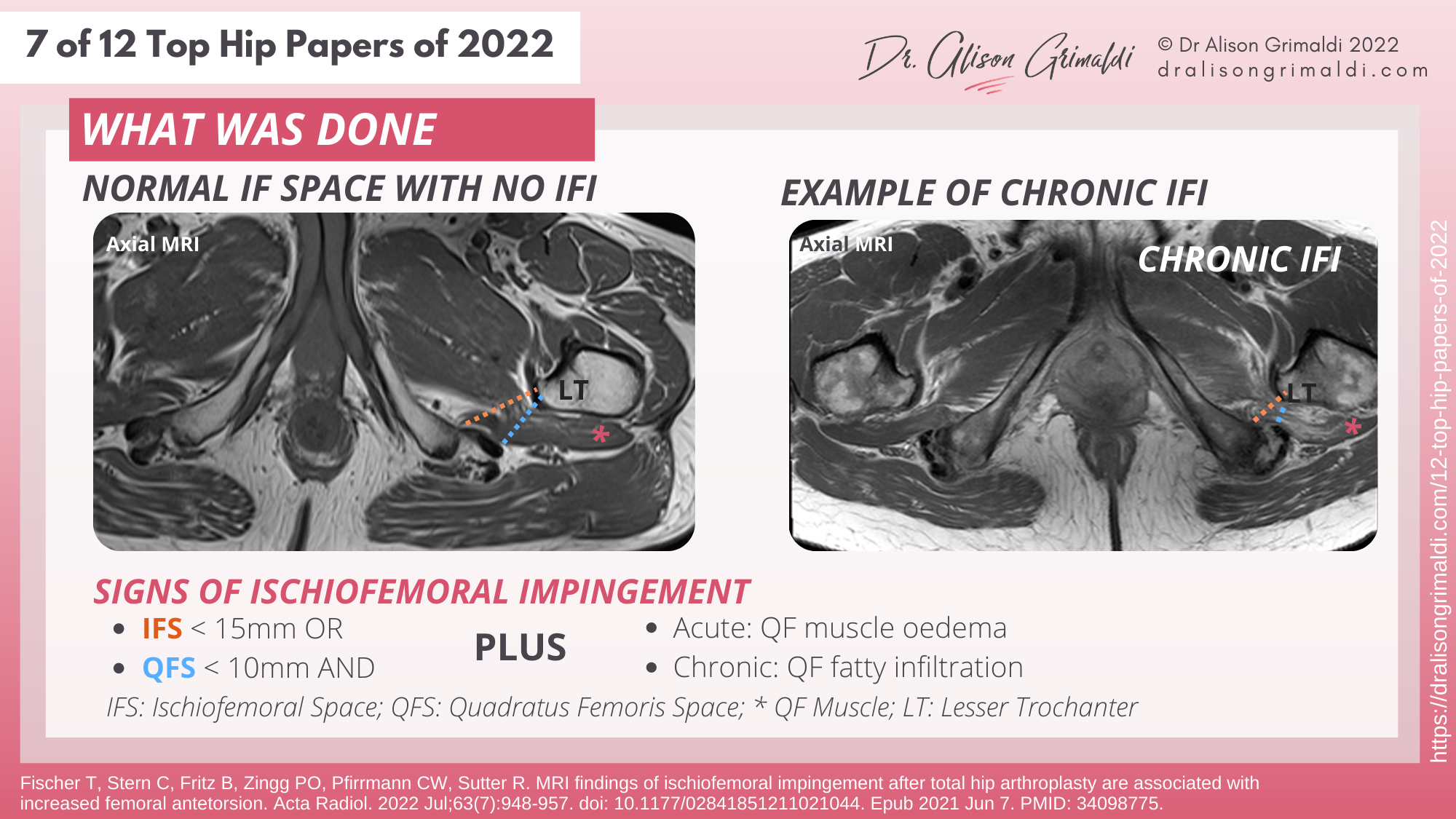
Key Findings:
Femoral anteversion in those with & without ischiofemoral impingement
- 11.4% (14/123) of women exhibited findings of ischiofemoral impingement after hip replacement.
- Only 2.0% (2/98) of men exhibited findings of ischiofemoral impingement after hip replacement.
- Those with acute ischiofemoral impingement had greater femoral anteversion.

Clinical Implications:
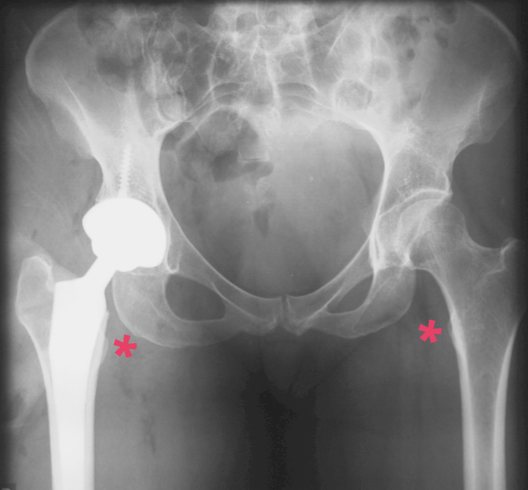
Keep an eye out for ischiofemoral impingement after hip replacement, particularly in females reporting persistent or new symptoms of buttock and/or groin pain. This may be due to too much torsion of the femoral stem. Below you can find a summary of the clinical implications from this paper:
- Impingement of the quadratus femoris muscle between the ischial tuberosity and the lesser trochanter is one reason for lower buttock &/or groin pain after total hip arthroplasty.
- The ischiofemoral space can be reduced by excessive femoral anteversion, which is determined by visual placement of the stem at the time of surgery.
- Surgeons aim to achieve around 15° of anteversion (normal in native hips is 10-20°); higher ranges may result in ischiofemoral impingement after hip replacement.
- Females are at higher risk of ischiofemoral impingement after hip replacement and in native hips, due to their pelvic anatomy.
- Conservative management will involve optimising muscle function and movement patterns to maximize ischiofemoral space.
Like to learn more about assessment and treatment of patients with Ischiofemoral Impingement?
In this course, you can find detailed information on pathoaetiology, assessment and management of buttock pain associated with ischiofemoral impingement and many other conditions. To learn more, take the online course, or join me in a workshop.
This online course is included in Hip Academy and Hip Academy members receive discounts for online workshops.
I hope you enjoyed the infographics and key learnings from Day 7 of my 12 Top Hip Papers of 2022. There are 5 more papers to come, so stay tuned and return to the blog page each day to see what other top papers and infographics I have for you!
If you missed yesterday's Hip Paper, click the link below to catch up!

Have you heard about Hip Academy?
Enjoy the benefits of a world class educational Hip Program, specifically designed by Dr Alison Grimaldi to help improve your knowledge surrounding the Hip and Pelvis, and become an expert in your field.
With all Hip Courses included, enjoy all the extra inclusions, including; access to the entire eBook series, growing video library, expanding PDF resource centre, regular member meetings, forums + lots more!

